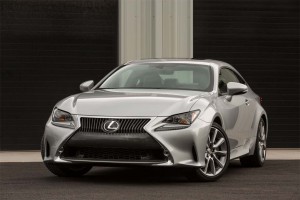
Lexus is rolling out its new Safety System + next year with an eye toward a more robust system in 2017.
With automakers bandying about dates for when they’re going to introduce some form of “self-driving” vehicle, Lexus is promoting its version, the “Integrated Safety Management Concept,” combines a number of safety technologies and systems.
The new package is designed to encourage the adoption of safety technologies and will be rolled out across all Lexus models in Japan, North America and Europe by the end of 2017.
In the interim, the brand is introducing its Lexus Safety System +, which includes a Pre-Collision System that helps prevent and mitigate collisions; Lane Departure Alert to prevent vehicles from departing from their lanes; and Automatic High Beams to ensure optimal forward visibility during nighttime driving next year.
As part of a multi-faceted approach to active safety, the Lexus Safety System + package combines millimeter-wave radar with a camera, achieving high reliability and performance to detect pedestrians in addition to vehicles.
The system activates an audio and visual alert in addition to brake assist, followed by automated braking if the driver does not brake in time. For potential collisions with vehicles, the PCS system operates at relative speeds of between 10 km/h and the vehicle’s top speed, reducing speed by approximately 40 km/h.
Lane departure assistance (LDA) uses a camera to detect white and yellow lane markings. If the vehicle starts to deviate from a lane, LDA alerts the driver with an audio-visual alert and steering wheel vibration.
On highways, radar cruise control uses millimeter-wave radar to detect preceding vehicles and determine their speed. It then adjusts vehicle speed, within a set range, to ensure that there is a safe distance between vehicles. By using a forward-facing camera and radar to monitor vehicles moving into or out of the lane, radar cruise control helps maintain smooth acceleration and deceleration while driving.
“Zero fatalities” has become the stated goal of automakers as they introduce the active safety technology.
General Motors Chief Executive Officer Mary Barra said Cadillac will introduce an advanced intelligent vehicle technologies on certain 2017 model year vehicles, an all-new 2017 Cadillac vehicle will offer customers an advanced driver assist technology called Super Cruise and in the same timeframe the 2017 Cadillac CTS will be enabled with vehicle-to-vehicle communication technology that allows vehicles to react to other vehicles in intersections and other situations.
Barra said the new technology will not only benefit consumers in the U.S., but also is in demand by consumers in Europe where congestion is much worse and in China where accidents take an increasingly heavy toll.
“We are not doing this for the sake of the technology itself,” she said. “We’re doing it because it’s what customers around the world want. Through technology and innovation, we will make driving safer.”
Super Cruise, the working name for GM’s automated driving technology, will offer customers a new type of driving experience that includes hands-off lane following, braking and speed control in certain highway driving conditions. The system is designed to increase the comfort of an attentive driver on freeways, both in bumper-to-bumper traffic and on long road trips.
The vehicle-to-vehicle communication technology could mitigate many traffic collisions and improve traffic congestion by sending and receiving basic safety information such as location, speed and direction of travel between vehicles that are approaching each other. It will warn drivers and can supplement active safety features, such as forward collision warning, already available on many production cars.
(Lexus trying to tie a red bow on 300,000 in 2014 sales. For more, Click Here.)
As the world becomes more congested and new populations need access to personal mobility, accidents continue to be a global concern, said Barra, who noted a recent National Highway Traffic Safety Administration study estimated that the economic and societal impact of car crashes is more than $870 billion.
Seigo Kuzumaki, chief safety technology officer for Lexus’ parent company Toyota, said during a recent visit to Ann Arbor, “Toyota’s vision is of a world without traffic fatalities, and these advanced connected and automated vehicle technologies hold the potential to revolutionize automotive safety.
(Click Here for details about Nissan’s U.S. production plans.)
“We are committed to bringing advanced active safety systems to market as quickly as possible and will make them accessible to a broad range of drivers.”
While semi-automated driving is getting closer, it will also requires vehicle-to-vehicle communication and communication with the traffic environment and a careful study of how the driver actually interacts with the new systems, said Kuzumaki, who has been instrumental in developing the four fully automated vehicles that Toyota now has in operation.
(To see more about Mazda following in the footsteps of others and expanding its Takata airbag recall, Click Here.)
Toyota is currently working on a number of new technologies that could make the company active safety system even more effective.
For example, Toyota is developing a high-resolution LIDAR, which combines the functions of millimeter wave radar and stereo cameras and detects the positions and the shapes of obstacles. It combines active sensors that work in daylight and at night.
